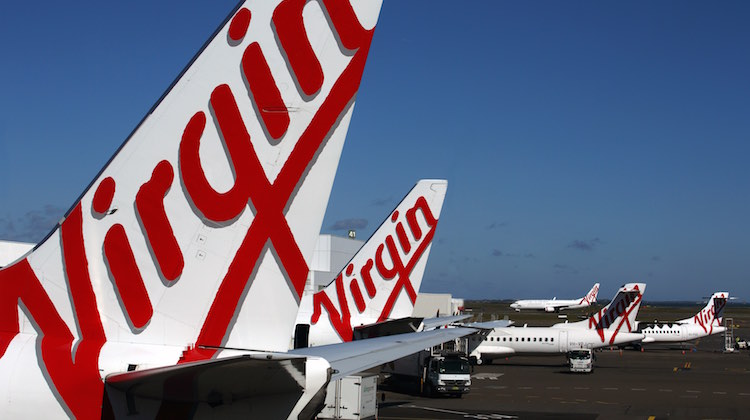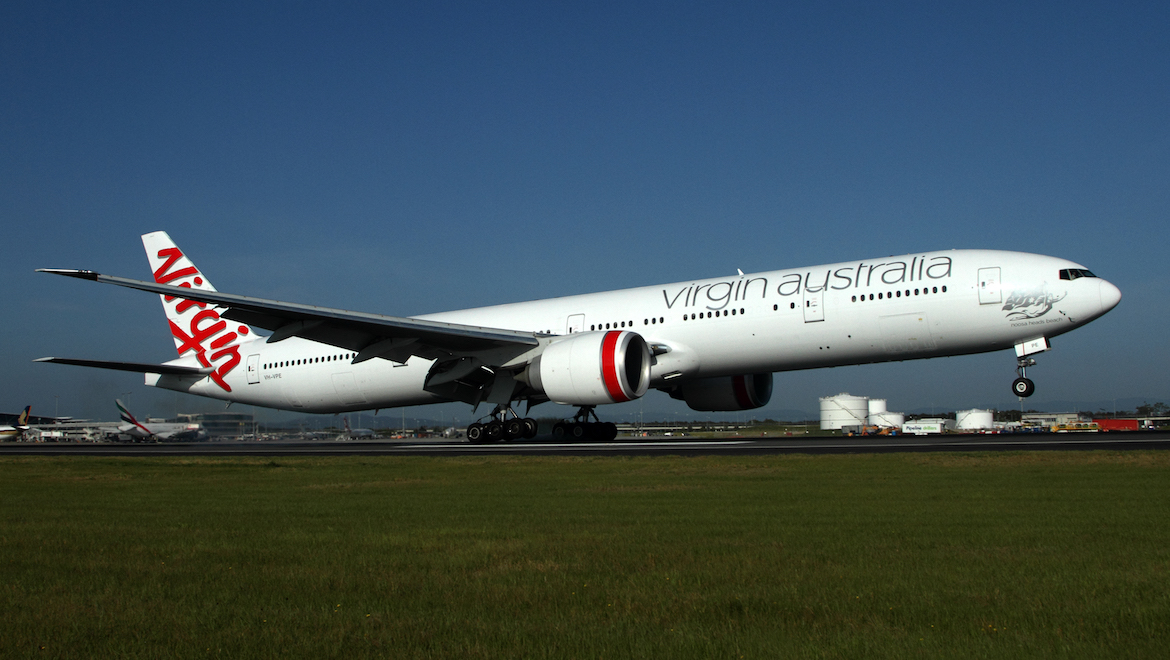
Virgin Australia says it is seeking one of the two new slots available to Australian carriers for Tokyo Haneda airport to launch nonstop flights to Japan.
The airline said on Tuesday it would soon lodge an application with Australia’s International Air Services Commission (IASC) to be allocated a slot at the close-in Tokyo airport.
“Virgin Australia’s intended application for slots at Haneda Airport is extremely important to ensure there is competition in this market to bring choice and value for consumers, with lower airfares and more travel options to Japan,” Virgin Australia said in a statement.
“The airline is focussed on investing in the right routes that are commercially profitable and introducing Japan to its network will benefit the business, guests and the broader tourism industry.”
Earlier in September, the Japanese Ministry of Land, Infrastructure, Transport and Tourism (MLIT) allocated a total of four new slot pairs for Australia-Tokyo Haneda routes, comprising two new slot pairs for Japanese carriers – one for All Nippon Airways (ANA) and one for Japan Airlines – and two new slot pairs for Australian carriers.
The allocation was among a package of 50 slot pairs for international services at Tokyo Haneda, with 25 for Japanese airlines and 25 for international carriers.
Also, the slots would be for daytime services – notionally between 0600 and 2255 – as air traffic managers opened up more airspace in the Tokyo area to support the additional flights.
The IASC, which manages Australia’s international traffic rights, said on September 3 it was aiming to allocate the two Tokyo Haneda slots by October 31 2019, in order to enable Australian carriers to begin flights from March 29 2020, the start of the 2020 northern summer scheduling period. It described the deadline as a “tight timeframe”.
While Virgin Australia did not cover potential routes or aircraft type, the airline’s application to the IASC – which was likely to be lodged by September 24 at the latest – was expected to offer more details on its proposed Tokyo Haneda operation.
“Japan is a very strong and important market for both inbound and outbound travel to Australia, with travel volumes growing by almost 50 per cent since 2015,” Virgin Australia said, adding that Tokyo Haneda was a popular entry point into Japan because of its close proximity to the city.
Currently, Virgin Australia’s international network comprises short-haul destinations in New Zealand, the nations of the South Pacific and Denpasar in Indonesia, as well as long-haul flights to Hong Kong and Los Angeles.
Its widebody fleet sits at 11 aircraft – five Boeing 777-300ERs that are used on flights to Los Angeles from Brisbane, Melbourne and Sydney, as well as six Airbus A330-200s that operate to Hong Kong from Melbourne and Sydney, between Sydney and Nadi, and on nonstop services from Perth to Australia’s east coast capitals.

Tokyo Haneda Airport had previously been predominantly used by Japanese carriers as a domestic airport. However, there have been efforts to expand the number of international services at Haneda amid a Japanese government push to attract more tourists to the country.
In addition to being much closer to central Tokyo compared with Narita’s location on the eastern side of the city, Haneda also offers a host of potential connections to other destinations in Japan.
While Virgin Australia has signalled plans to apply for one of the two new slot pairs, its rival Qantas has lodged an application to the IASC for both slots.
The two slots would be used to add a second daily Sydney-Tokyo Haneda flight and switch its Melbourne-Tokyo Narita service to Tokyo Haneda.
Qantas said in the submission to the IASC its plans to add flights to Tokyo Haneda did not deny competition from other Australian carriers, noting there was unrestricted capacity for operating into Tokyo Narita and other points in Japan under the current air services agreement between the two countries.
Currently, there were nine nonstop routes between Australia and Japan operated by four carriers – Sydney-Tokyo Haneda (ANA and Qantas), Sydney-Tokyo Narita (Japan Airlines), Sydney-Osaka Kansai (Qantas), Melbourne-Tokyo Narita (Japan Airlines and Qantas), Brisbane-Tokyo Narita (Qantas), Gold Coast-Tokyo Narita (Jetstar), Cairns-Osaka Kansai (Jetstar), Cairns-Tokyo Narita (Jetstar) and the recently commenced Perth-Tokyo Narita service from ANA.
And there is new capacity coming later in 2019, with Qantas scheduled to operate a seasonal Sydney-Sapporo nonstop flight with Airbus A330 equipment between December 2019 and March 2020.
While Virgin Australia does not fly to Japan with its own aircraft, it sells codeshares flight between Australia and Japan operated by its alliance partner Singapore Airlines (SIA).











